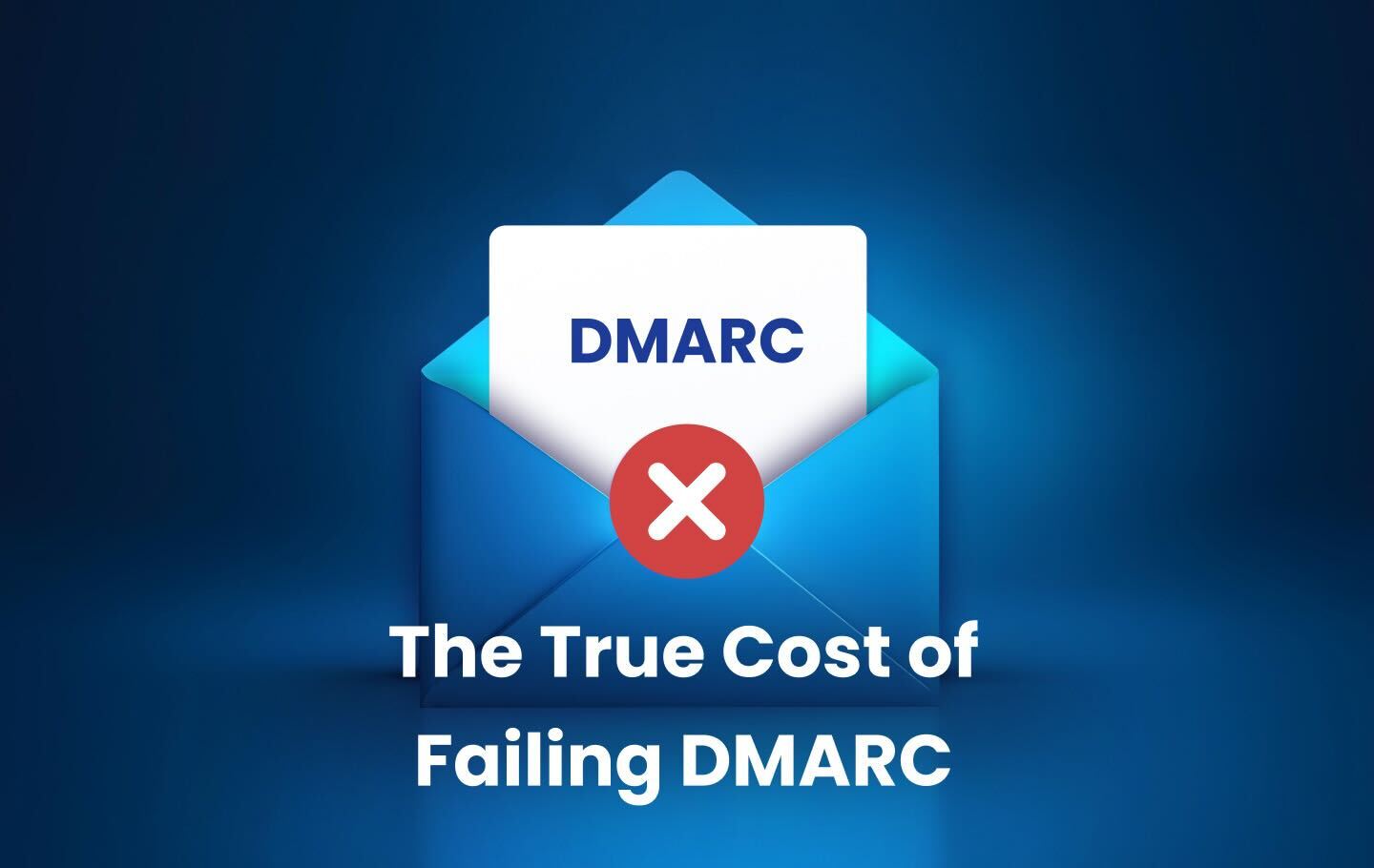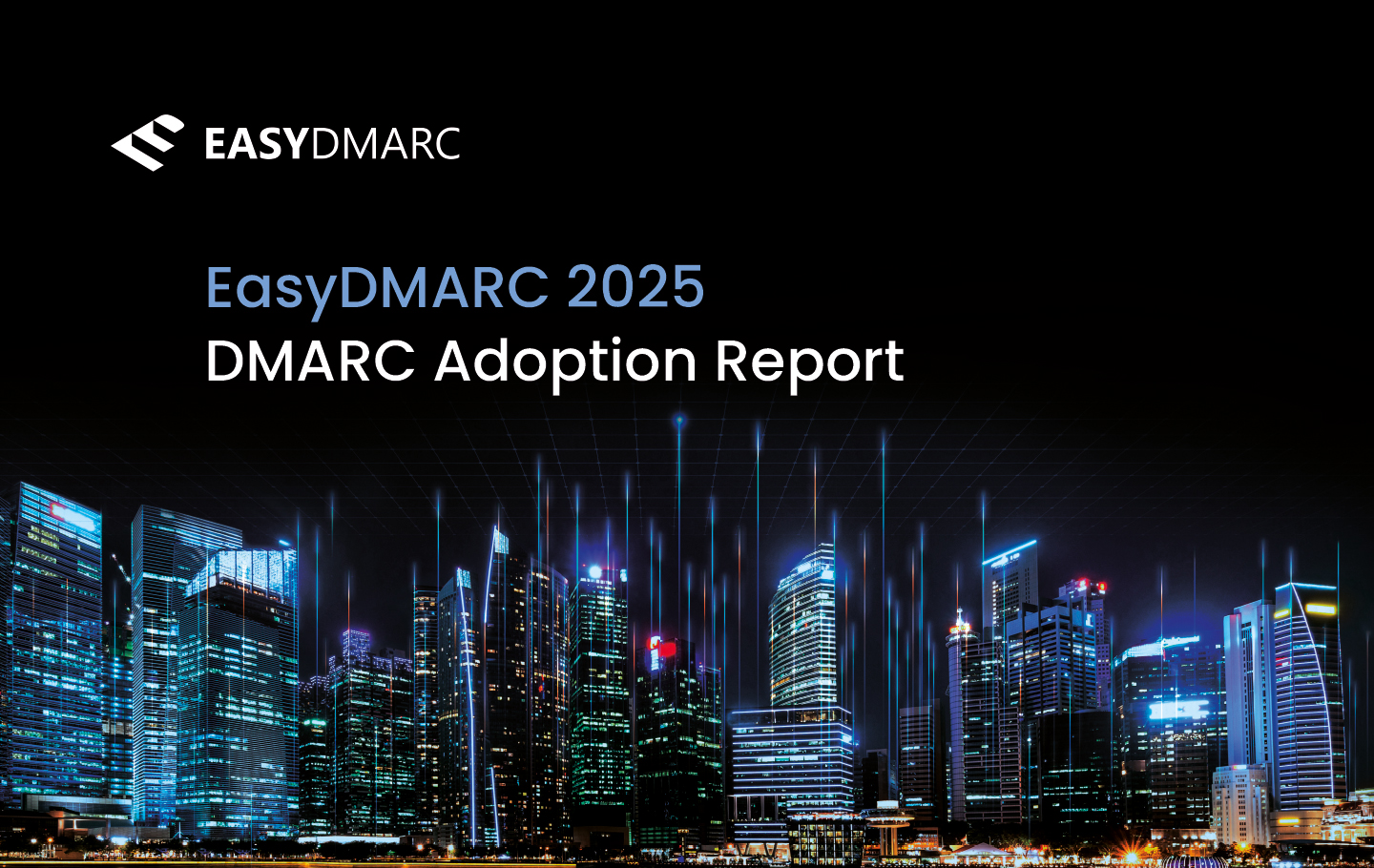Cybercriminals have long relied on email as their favorite attack method. Phishing emails, fake invoices, and messages that look like they come from trusted brands are sent out in huge volumes every single day, aiming to trick someone into clicking a link, sharing login details, or transferring money.
DMARC was introduced as a defense against these threats. It gives organizations the ability to confirm which emails are legitimate and block those sent by impostors. Without this protection in place, attackers can freely send messages that look like they come from your company, putting customers, employees, and partners at risk.
When DMARC compliance risks are ignored, organizations may face direct financial losses from fraud, reputational damage when customers lose trust, and even legal exposure if regulators find that security obligations were not met. These dangers are real and growing, and every company that uses email should understand the risks of failing DMARC and how comprehensive DMARC solutions can solve these issues before they cause damage.
Why DMARC Matters for Organizations
Every organization depends on email to communicate with customers, employees, and partners. That makes it a prime target for cybercriminals who want to launch phishing, spoofing, or Business Email Compromise (BEC) attacks. These threats work because fake emails can look almost identical to genuine ones, which makes it hard for recipients to tell the difference.
DMARC ensures that only authorized senders (checkable via DMARC Lookup) can use your domain name, preventing attackers from impersonating your organization. Beyond protecting inboxes, DMARC also acts as a trust signal. When people see that your emails are secure, they are more confident that messages from your company are real and safe to interact with.
For large organizations, DMARC compliance risks are even greater. According to the FBI’s 2023 Internet Crime Report, Business Email Compromise scams caused losses of over $2.9 billion. The sheer volume of outgoing emails means a single successful spoofing campaign could reach thousands of customers in minutes. At the same time, regulators are putting more pressure on enterprises to prove they are protecting sensitive data. All of this reflects what is at stake when organizations fail to take email security seriously.

The Consequences of Failing DMARC
Understanding the consequences of failing DMARC is critical for any organization that relies on email for communication. When organizations fail to set up or enforce DMARC, they leave the door wide open for attackers to misuse their domain. Aside from raising a range of technical concerns, the impact also leads to customers losing confidence in your brand, partners hesitating to do business with you, and cybercriminals gaining the upper hand. These attacks are especially damaging because they exploit the trust people place in recognized brands. Once fraudulent emails are sent using your domain, the fallout can affect everything from customer loyalty to revenue streams.
What Are the Risks of Not Using DMARC?
Without DMARC, there’s no reliable way to stop outsiders from sending emails that appear to come from your organization, which exposes you to:
- Large-scale phishing campaigns targeting your customers.
- Fraudulent invoices or payment requests sent to your vendors or partners.
- Fake internal emails that trick employees into sharing passwords or wiring money.
What Are the Risks of Not Having a DMARC Policy in Place?
Even if DMARC is set up but left at a “monitor only” level, attackers can still abuse your domain. Without an enforced policy, fraudulent messages won’t be blocked, and your organization will still be vulnerable as a result, causing:
- Customer confusion and mistrust when they receive fake emails.
- Damage to your brand image that is difficult to repair.
- Missed opportunities, as potential partners or clients may avoid working with an organization that lacks strong email protections.
Real-World Scenarios
- In 2016, Leoni AG, one of Europe’s largest wire and cable manufacturers, lost about €40 million (US$45 million) when attackers used fake executive emails to trick staff into transferring money. The lack of strong email authentication left employees unable to tell real emails from fake ones.
A few years later, a UK branch of Caterpillar Inc suffered losses of nearly US$11 million after fraudsters sent a convincing invoice from a spoofed email domain. Without DMARC in place to block such messages, the fake request slipped through as if it were genuine.
The Financial Impact of DMARC Failure
Beyond the immediate threats of phishing and spoofing, the absence of DMARC enforcement can lead to substantial financial repercussions for organizations.
Direct Costs
- Fraudulent Transactions: Business Email Compromise (BEC) attacks have become increasingly prevalent. In 2024, 64% of businesses reported encountering BEC attacks, with each incident resulting in an average loss of $150,000.
- Data Breach Expenses: Phishing attacks are a significant contributor to data breaches. The average cost of a data breach caused by phishing in 2025 was approximately $4.4 million.
- Recovery and Legal Fees: Organizations often incur substantial costs in investigating and mitigating the effects of email-based attacks, including forensic analysis, legal fees, and public relations efforts.
Indirect Costs
- Customer Attrition: Loss of customer trust due to compromised communications can lead to a decline in customer retention and acquisition.
- Brand Erosion: Repeated security incidents can tarnish an organization’s reputation, making it difficult to rebuild brand equity.
- Missed Revenue Opportunities: Potential partners and clients may hesitate to engage with organizations lacking robust email security measures, leading to lost business opportunities.
Scale Amplifies Risk
This risk of not enforcing DMARC is even higher for large organizations, since they often handle sensitive financial information, contracts, and personal data. Even a small number of incidents can result in millions of dollars lost when fraudsters trick employees or customers into transferring funds or sharing confidential information.
Additionally, bigger organizations usually have more employees, departments, and communication channels. This complexity makes it harder to monitor all email traffic and respond quickly to threats, which can increase the time it takes to contain an attack.
Implementing DMARC helps scale security alongside the organization. By automatically validating which emails are legitimate and blocking impersonators, DMARC reduces the number of fraudulent messages reaching inboxes, protecting both revenue and trust as the organization grows.
Legal and Compliance Exposure
Not having DMARC properly set up can also put an organization in a risky position when it comes to following data protection and security regulations. Many laws require companies to take reasonable steps to protect sensitive information, and email security is an important part of meeting these rules.
Failing to comply can lead to legal consequences such as fines, penalties, or lawsuits. Authorities may increase oversight on organizations that do not take adequate measures to secure their email communications. Even if no direct attack occurs, the lack of proper security can make a company appear careless in the eyes of regulators.
To reduce these risks, companies should implement DMARC, which gives them control over who can send emails from their domain and provides reports on email activity. This helps demonstrate to regulators, customers, and partners that the organization is actively protecting its communications.
Brand and Reputational Damage
When attackers send phishing or spoofed emails that appear to come from a company, it can quickly erode trust with customers and partners. People expect communications from a recognized brand to be safe and reliable, and even a single fraudulent email can make them question the organization’s credibility.
Once customers or partners have been exposed to these fake messages, regaining their trust can be extremely difficult. Unlike financial losses, which can sometimes be recovered, damage to a company’s reputation can linger for months or even years. Customers may hesitate to continue doing business, partners may reconsider collaborations, and the overall perception of the brand can suffer long-term harm.
Reputational damage can also have broader effects. Public incidents of email fraud can affect stock prices, reduce customer loyalty, and create challenges for marketing and business development. By protecting the domain with DMARC, organizations can prevent fraudulent emails from reaching inboxes, preserve trust and maintain strong relationships with customers, partners, and the wider public.
Operational Inefficiencies and Hidden Costs
A constant DMARC fail can create hidden problems that affect daily operations across an organization. Security teams often become overwhelmed with investigating phishing attacks and spoofed emails, which takes time away from other important tasks. At the same time, IT helpdesks can be flooded with customer complaints about suspicious messages, slowing down support for legitimate issues.
These disruptions can also affect internal communication. Employees may hesitate to trust emails from colleagues or partners, leading to delays in decision-making and project workflows. When staff spend extra time verifying messages or resolving issues caused by fraudulent emails, overall productivity drops, and departments become less efficient.
The combined effect of these hidden burdens translates into higher operational costs. Organizations may need to hire additional staff, invest in extra resources, or spend more time on manual checks, all of which increase with time. By implementing DMARC, companies can reduce these inefficiencies, improve email workflows, and make sure that employees and customers can trust the messages they receive.

How Organizations Can Fix DMARC Failures
Setting up DMARC may seem complicated at first, especially for companies that send large volumes of emails every day. It can be difficult to know which messages are legitimate, which are fake, and how to ensure that everything is working properly. EasyDMARC simplifies the challenges most companies face when setting up DMARC, guiding organizations step by step through the setup, automatically monitoring email activity, and sending alerts if anything unusual happens. Clear, easy-to-read DMARC failure reports show what’s happening with your domain and help your team act quickly to stop fraudulent messages.
With EasyDMARC, you can protect your emails from fraud and keep customers and partners confident in your communications. It also saves time and effort that would otherwise be spent handling email security issues. By using EasyDMARC, your organization will gain a clear, reliable way to secure its email, maintain trust, and prevent costly mistakes.
Frequently Asked Questions
Without DMARC, your domain is vulnerable to phishing, spoofing, and fraudulent emails. Attackers can send emails that appear to come from your organization, which can trick customers, partners, and employees, leading to lost trust, potential financial loss, and an increased chance of legal or compliance problems.
Even if your domain uses email authentication standards like SPF and DKIM, not having a DMARC policy means you have no clear instructions for email servers on how to handle unauthenticated messages. This allows attackers to exploit your domain, increasing the likelihood of phishing attacks, brand damage, and operational issues.
DMARC helps prevent BEC by ensuring that only authorized senders can use your domain. As a result, it becomes harder for attackers to impersonate your organization in emails and for employees or customers to fall victim to scams.
Large organizations face higher risks because they send more emails and handle more sensitive information. Without DMARC, they may experience more phishing attempts, higher operational costs, lost business opportunities, and greater reputational damage. The impact can be widespread, affecting multiple departments and stakeholder trust.
Platforms like EasyDMARC provide tools to simplify DMARC implementation and monitoring. These platforms offer automated reports, alerts for failed email authentication, and step-by-step guidance, helping organizations maintain compliance, protect their domain, and quickly respond to issues.


